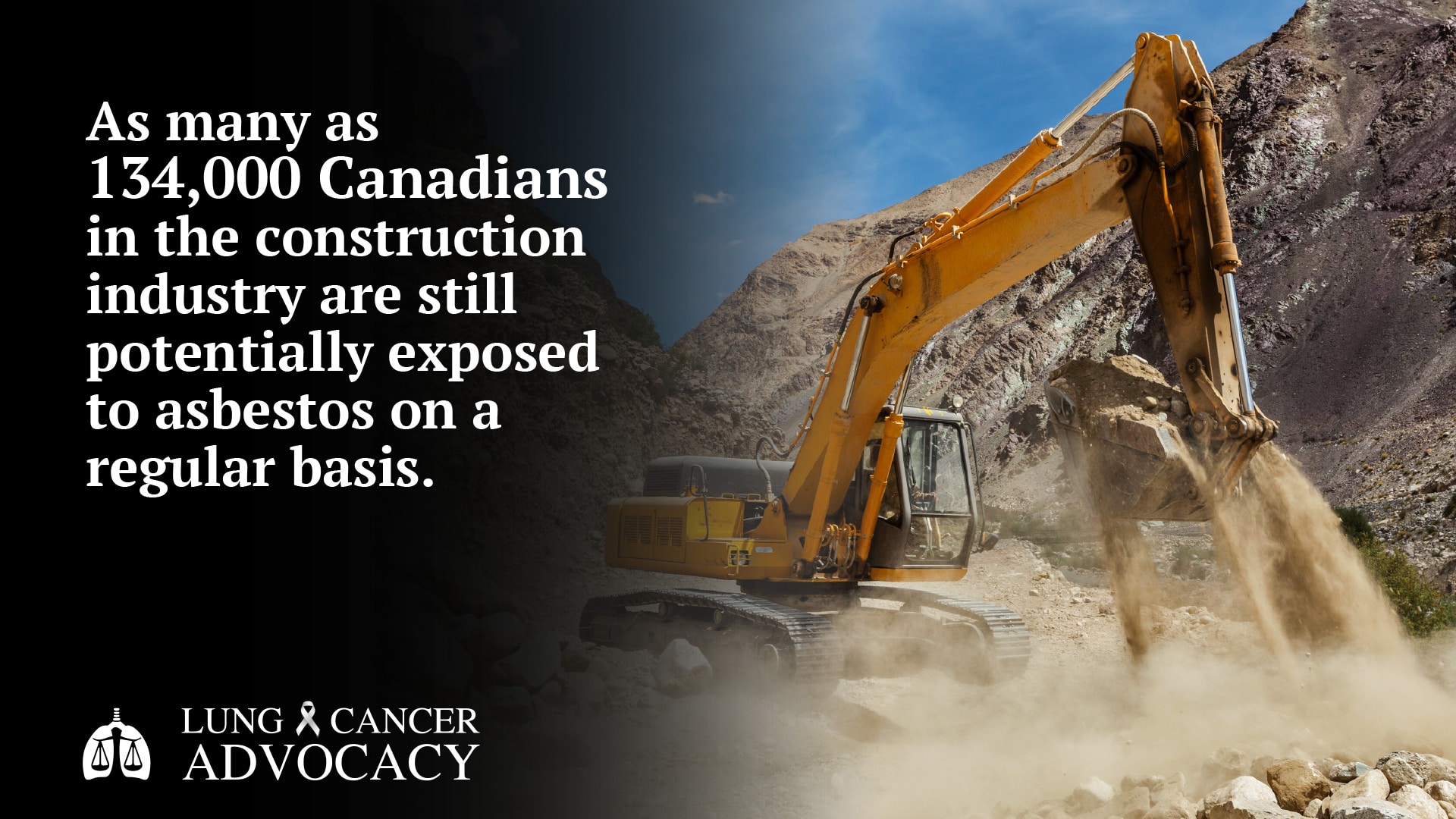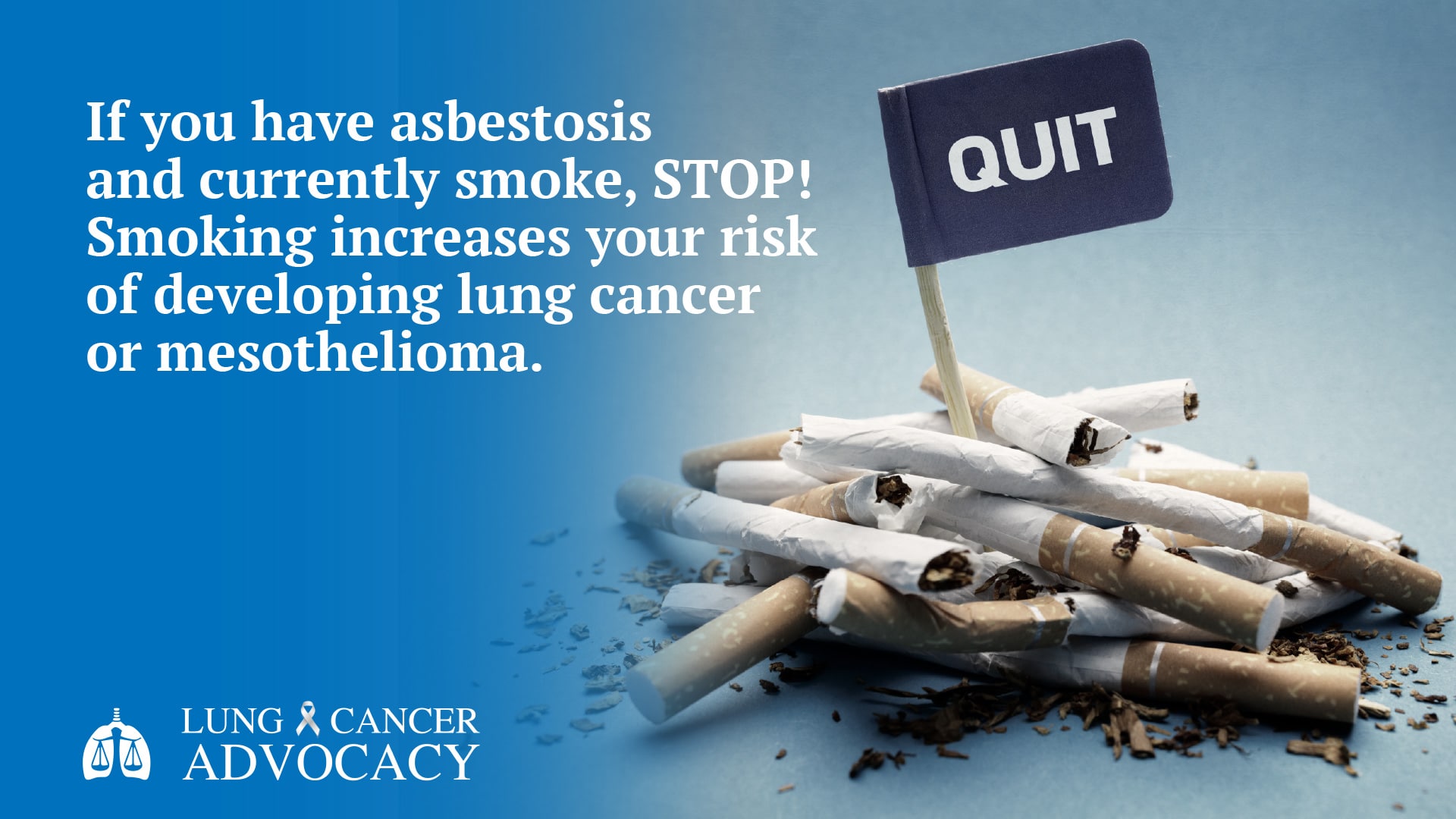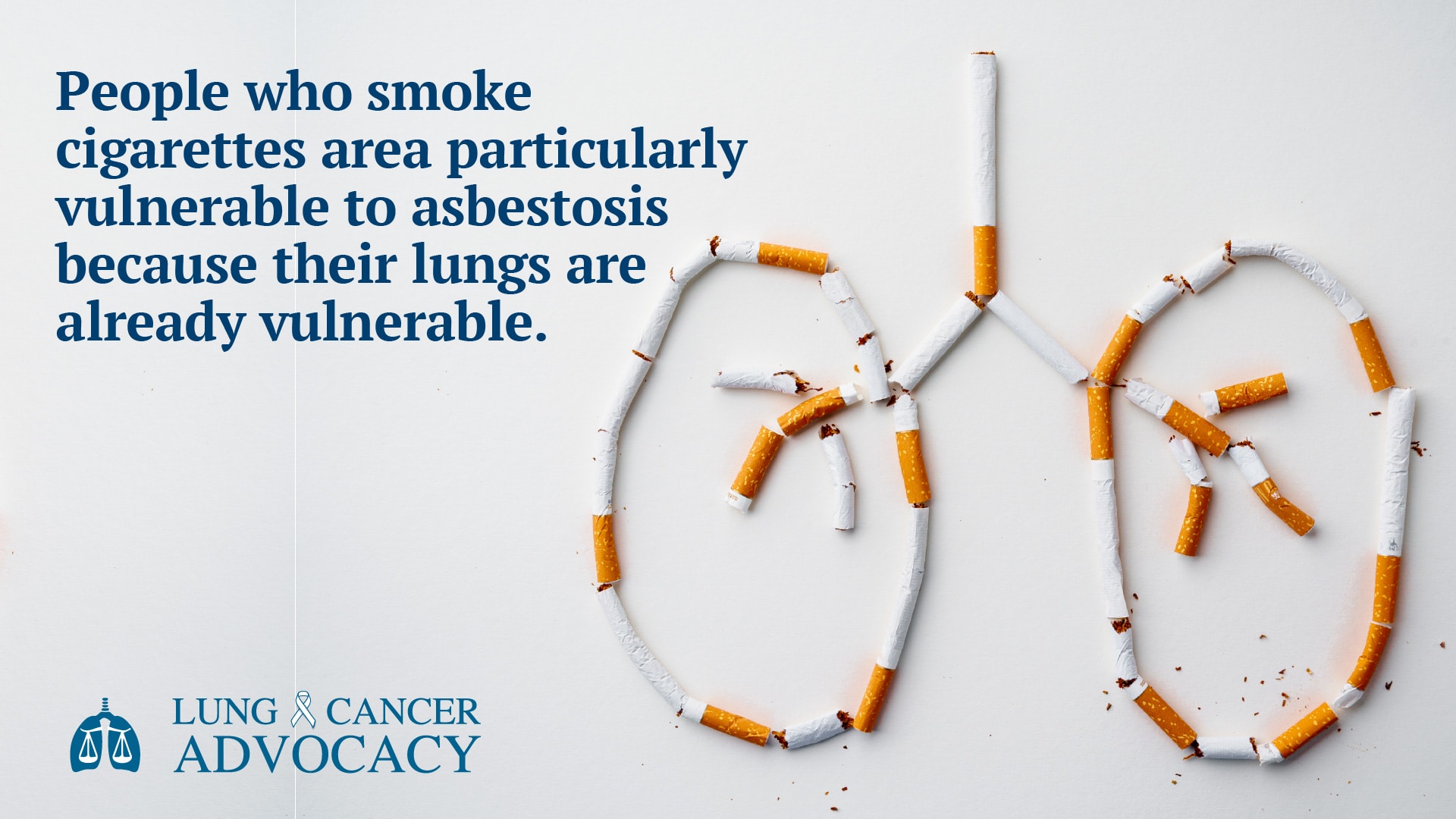Asbestosis
Asbestosis (as-bes-TOE-sis) is a lung disease that is caused by inhaling asbestos fibers. This disease is different from lung cancer and mesothelioma, as it is not cancerous.
When someone is exposed to asbestos fibers for a long time, their lungs become scarred. This can cause uncomfortable symptoms and significantly alter quality of life. Asbestosis is a chronic condition, meaning that it is continuous. It is also progressive, meaning that it will get worse over time, particularly if it is not properly diagnosed and treated.
If you have lung disease, lung cancer or throat cancer and are a current or former smoker, you may be entitled to compensation.
Click the button below for a FREE case evaluation!
Information about Asbestos
Asbestos is a fiber that occurs in nature in many types of rocks. For decades, it was a popular building material because it is strong and fire resistant. When asbestos deteriorates, the fibers become crumbly, and particles become airborne. These fibers are what causes asbestosis.
Across Canada, asbestos has long been used for construction, manufacturing, maintenance, and more. In fact, Canada was a global leader in asbestos production. Asbestos use declined in the 1970s, during which time the United States banned asbestos. Canada began the process of banning the mineral in 2018.
Between the 1970s and 1990s, many Canadians were heavily exposed due to how much of the product was manufactured and used across the country.

Information about Asbestosis
If you have asbestosis, it means there is scarring on your lungs. This can affect your health in many ways. You may experience chronic symptoms and more frequent respiratory illnesses, and may be more vulnerable to cancer and other diseases.
If you have respiratory symptoms and have been exposed to asbestos, you should talk to your healthcare provider about the possibility that you could have asbestosis. The symptoms of asbestosis are similar to symptoms of other less serious disorders. Talk to your doctor if you experience symptoms such as:
- Shortness of breath
- Difficulty breathing
- Persistent dry cough
- Pain or discomfort in the chest
- Loss of appetite
- Weight loss
- Fingertips and toes appear wide and rounded (clubbing)
If you experience these symptoms regularly, it is time to talk to your doctor about what is causing your symptoms.
Diseases like asbestosis and silicosis take many years to progress to the point of symptoms. In general, it takes 10 to 30 years for a diagnosis. By the time patients receive a diagnosis, they often already have significant disease. The earlier you get a diagnosis, the better. Asbestosis is a progressive disease, but you can slow down the process with proper treatment.
Who is At Risk for Asbestosis?
Only someone who has breathed in asbestos fibers can develop asbestosis. However, people who work in many environments and industries may not realize they have been, or are being, exposed. The most at-risk individuals are those who have worked in or around:
- Construction
- Sandblasting
- Roofing
- Soundproofing
- Vinyl Flooring
- Insulation
- Vehicle Maintenance
- Mining
- Surface Treatments:
- Paint
- Putty
- Caulk
- Drywall
- Spackling
- Tar Paper
If you have ever worked in environments that contain asbestos, you may be at risk. If you work, or worked, in this environment for a long time, you are more at risk.
In addition to prolonged exposure, smoking cigarettes also increases your risk of developing asbestosis. Cigarettes damage your lungs and can make your symptoms worse. Even worse, smoking when you have asbestosis increases your risk of developing lung cancer and mesothelioma.

Diagnosis and Treatment
The first step in diagnosing asbestosis is doing some tests to rule out other potential causes of your symptoms. Doctors will review your medical records and ask questions, and then may perform the following tests:
- X-Rays: Shows scarring, masses, tumors, or a honeycomb appearance to the lungs.
- Lung Function Tests: Measures the amount of air you inhale and exhale.
- CT Scan: Examines the lungs in more detail.
- Biopsy: Your doctor may collect a tissue sample from your lungs to check for asbestos fibers.
Once you have a diagnosis, the next step is treatment. There is currently no cure for asbestosis. However, there are treatment options that can improve your symptoms and slow down disease progression.
Typical treatment options include:
- Inhalers to decrease lung congestion
- Supplemental oxygen via a mask or tube
- Quitting smoking
- Avoiding future exposure to asbestos
- Lung transplant in the most severe cases
With proper diagnosis and treatment, the outlook for people with asbestosis is generally good. Continued exposure and smoking, however, can make your symptoms worse.

Find Out More about Lung Injuries
An unfortunate reality is that many people are exposed to asbestos without their knowledge. Many industries continue to use materials that contain asbestos, and there are numerous products that may still contain asbestos fibers.
If you have been exposed to asbestos and have a diagnosis of asbestosis, you may have questions about your legal rights. Could your disease have been prevented? Did your employer fail to provide personal protective equipment? What is your recourse?
To find out more about lung injuries and your legal rights, call Lung Cancer Advocacy. Get a FREE consultation with a lung injury lawyer to get answers to your questions. Call us at (866) 541-5812, or sign up for help online.
Sources:
- https://www.lung.ca/lung-health/asbestos
- https://www.canada.ca/en/health-canada/services/air-quality/indoor-air-contaminants/health-risks-asbestos.html
- https://www.healthlinkbc.ca/healthlinkbc-files/asbestos
- https://www.healthline.com/health/asbestosis
- https://www.asbestos.com/news/2018/01/16/canada-new-asbestos-rules/